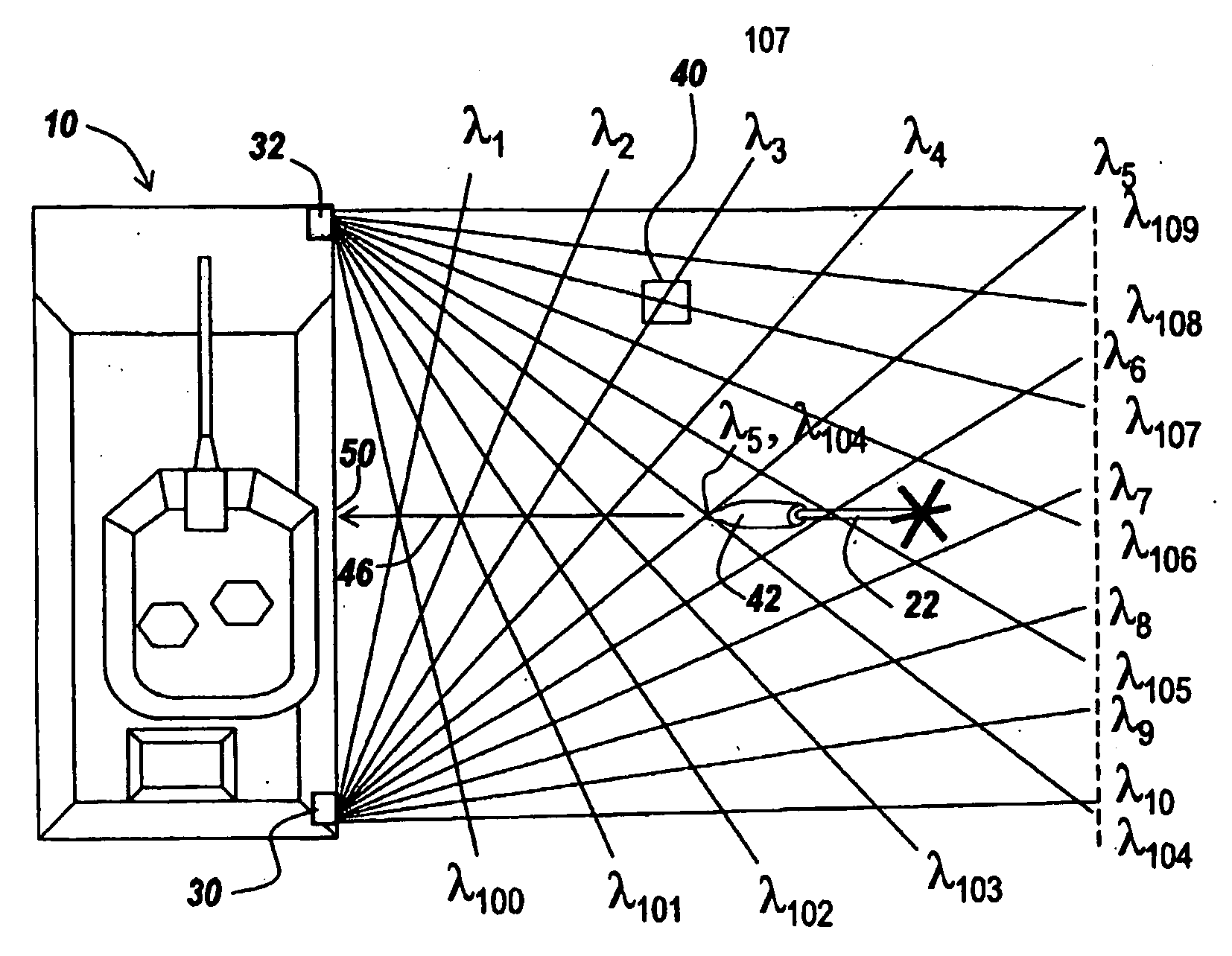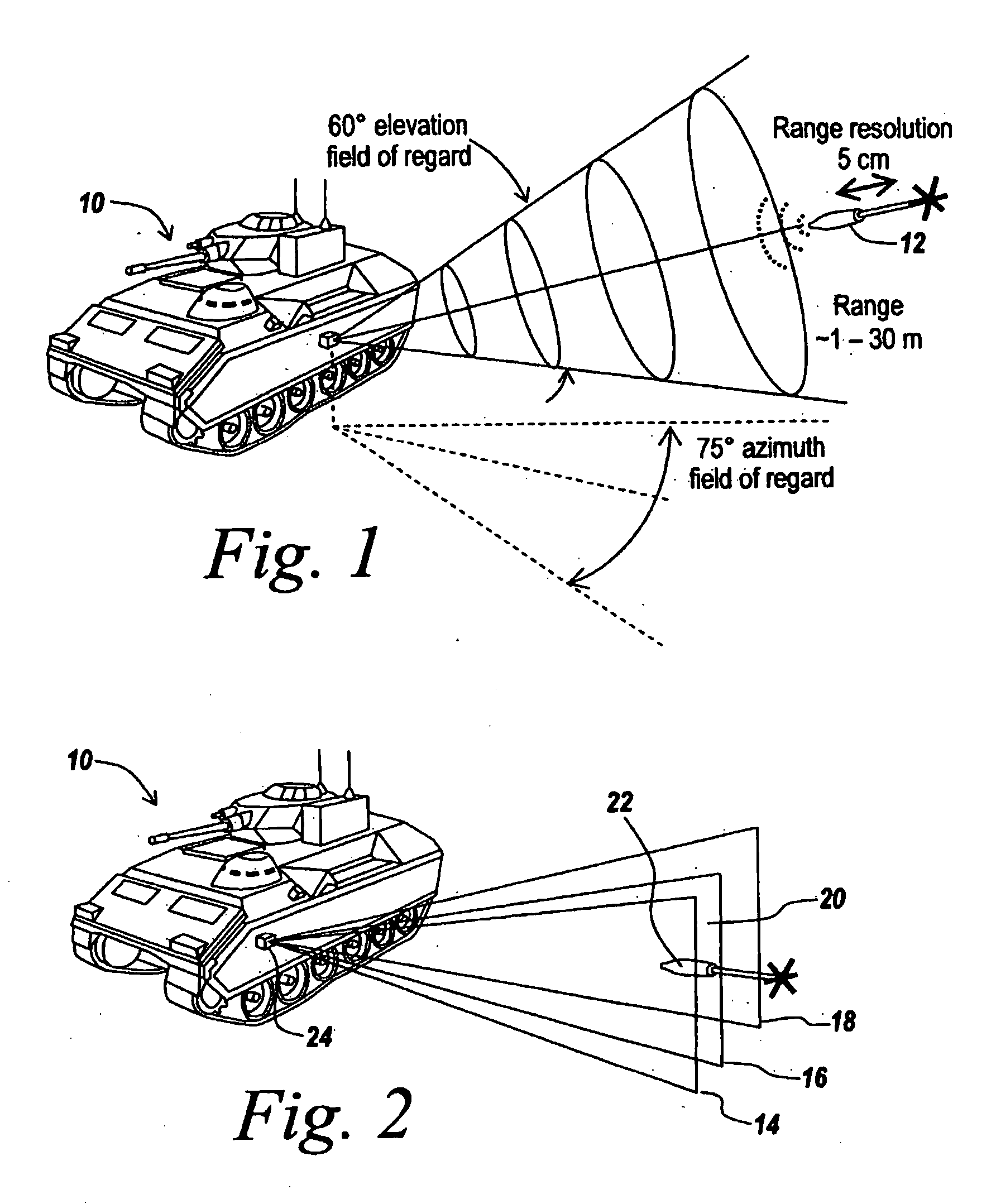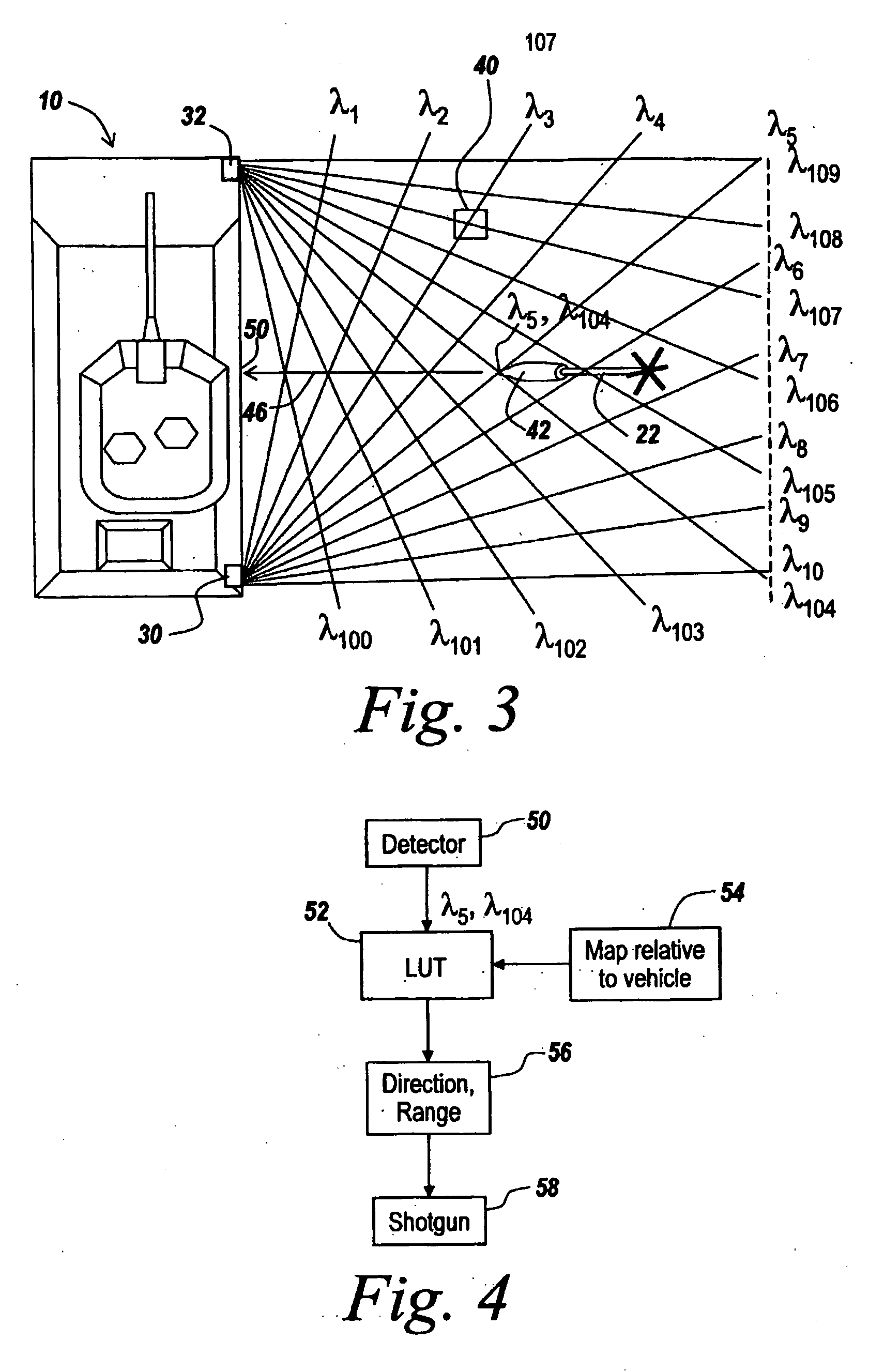Polyspectral Rangefinder for Close-In Target Ranging and Identification of Incoming Threats
a polyspectral rangefinder and target technology, applied in the direction of distance measurement, instruments, and using reradiation, can solve the problems of insufficient resolution of microwave radars to be able to pinpoint incoming missiles, inability to accurately identify incoming missiles, and inability to use radar to provide situational awareness in the immediate proximity of vehicles, etc., to achieve the effect of reducing the size of colored cells and greater resolution
- Summary
- Abstract
- Description
- Claims
- Application Information
AI Technical Summary
Benefits of technology
Problems solved by technology
Method used
Image
Examples
Embodiment Construction
[0057]Referring now to FIG. 1, in order to be able to protect a vehicle 10 such as a tank from an incoming missile or ordnance 12 such as an rocket-propelled grenade or TOW missile, from a practical standpoint one needs, in one embodiment, 60° in elevation for a field of regard as well as 75° in azimuth for a field of regard. Thus, the surveilled area is divided up into 60° sections.
[0058]It is possible using standard techniques to cue a countermeasure module or system from conventional warning or tracking radar for crude or rough aiming, assuming a minimal time is spent in the rough positions of the countermeasure device. However, such conventional fire control systems may be too slow; and the subject system may be used in place of prior fire control systems. The subject system may thus be integrated into an active protection system, with the purpose to provide aim point refinement for close-in defensive rounds and to provide a target identification, i.e., an RPG, TOW missile or a ...
PUM
 Login to View More
Login to View More Abstract
Description
Claims
Application Information
 Login to View More
Login to View More - R&D
- Intellectual Property
- Life Sciences
- Materials
- Tech Scout
- Unparalleled Data Quality
- Higher Quality Content
- 60% Fewer Hallucinations
Browse by: Latest US Patents, China's latest patents, Technical Efficacy Thesaurus, Application Domain, Technology Topic, Popular Technical Reports.
© 2025 PatSnap. All rights reserved.Legal|Privacy policy|Modern Slavery Act Transparency Statement|Sitemap|About US| Contact US: help@patsnap.com



